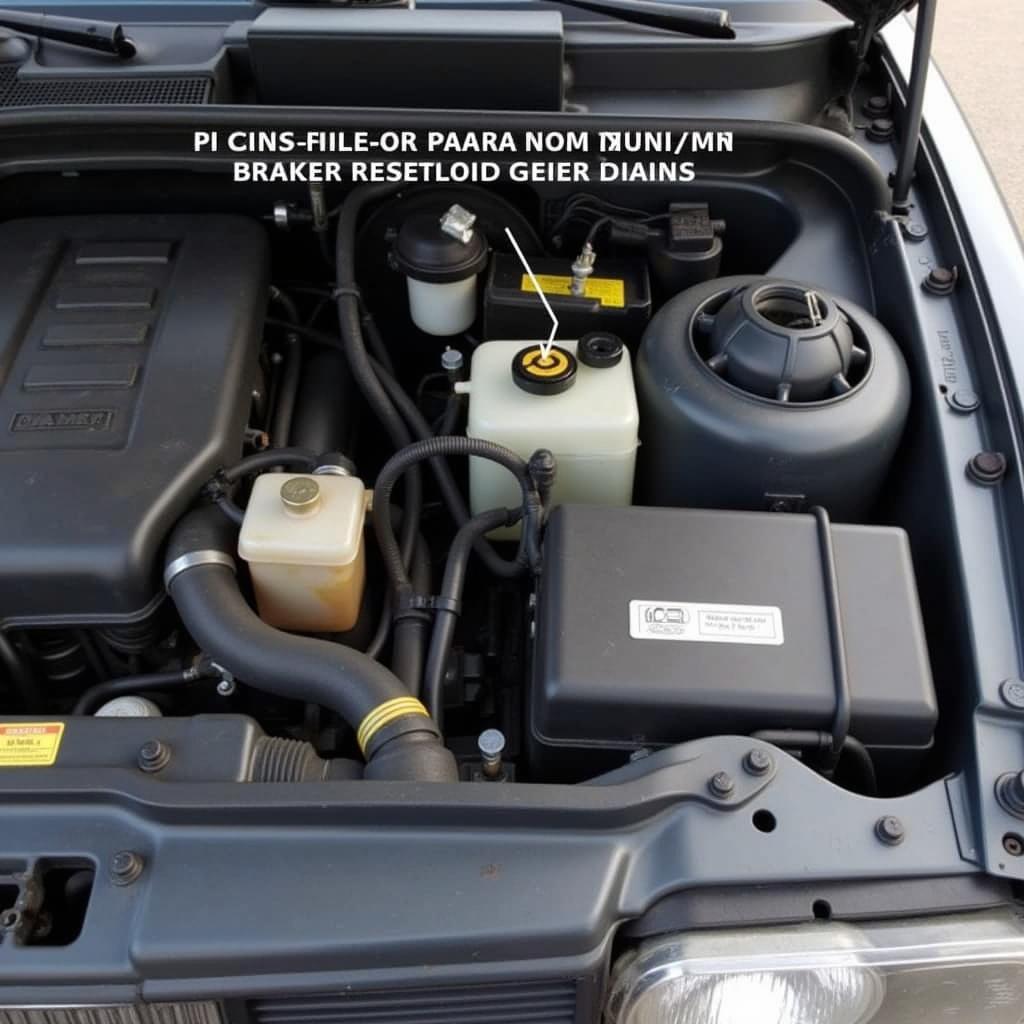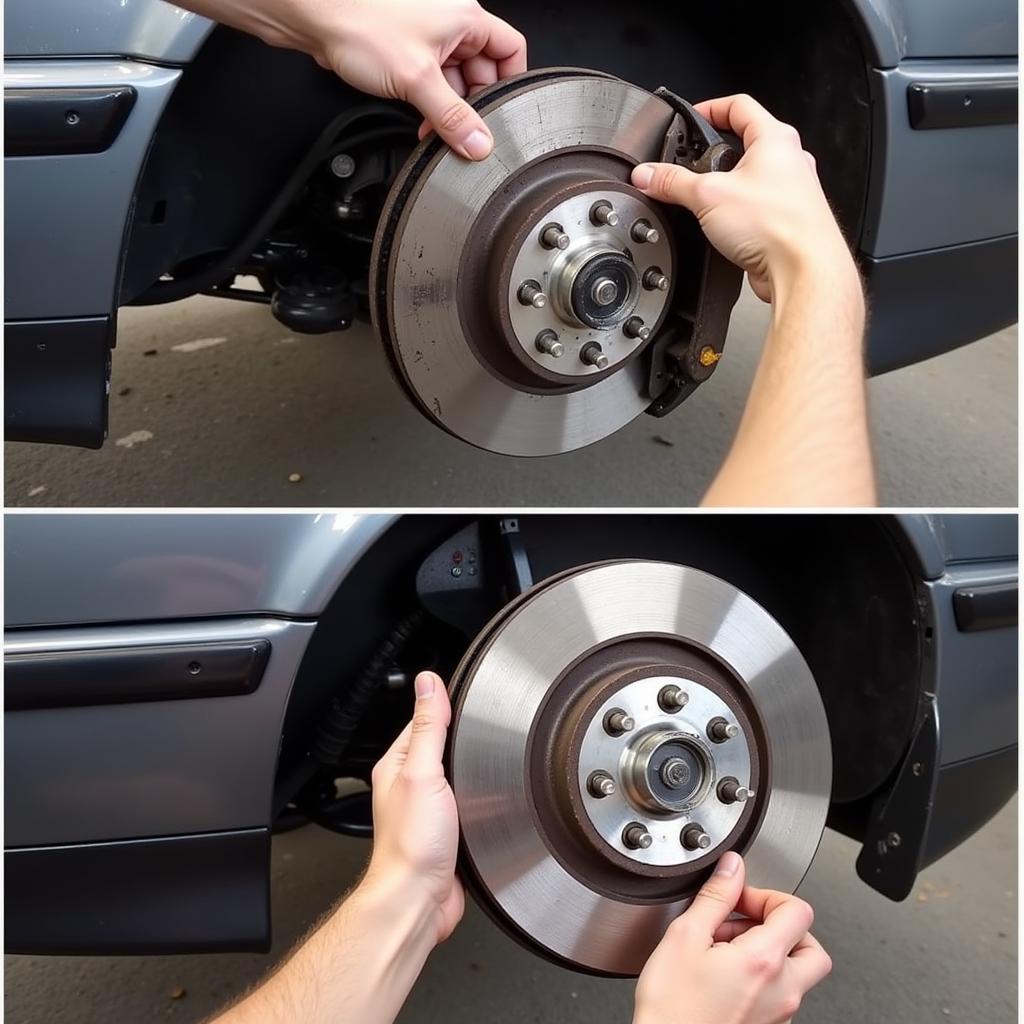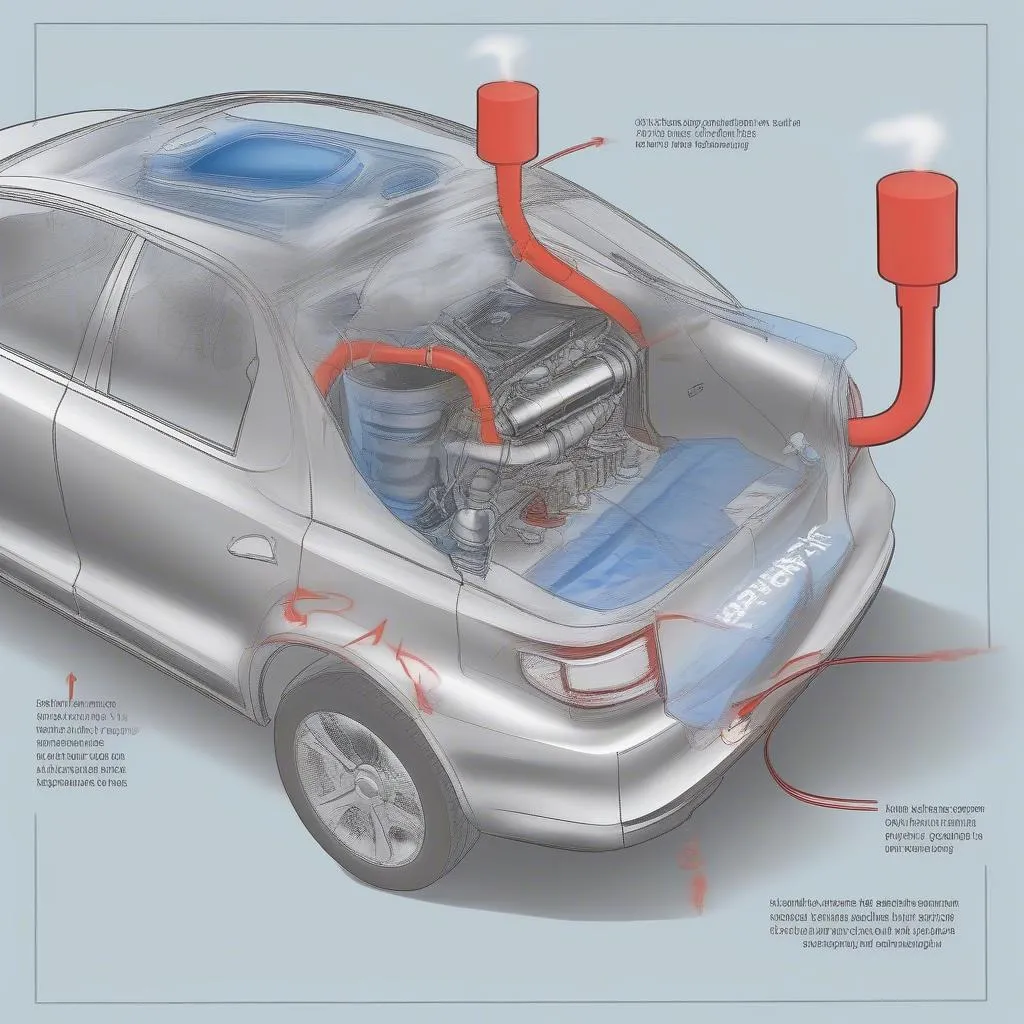The brake pad warning light on your E34 is a crucial safety feature, letting you know when your brake pads have worn down and need replacing. Ignoring this light can lead to costly repairs and, more importantly, compromise your safety on the road. This comprehensive guide will walk you through understanding, diagnosing, and resolving issues related to the E34 brake pad warning light, empowering you to keep your driving experience safe and worry-free.
Understanding Your E34’s Braking System
Before delving into the warning light, it’s helpful to grasp the basics of your E34’s braking system. The system uses hydraulic pressure to force brake pads against rotors, creating friction that slows the car down. Over time, these brake pads wear down with use, eventually triggering the warning light on your dashboard.
Common Causes of the E34 Brake Pad Warning Light
While worn brake pads are the most common culprit, several other factors can trigger the brake pad warning light on your E34:
- Worn Brake Pad Sensors: Most E34s are equipped with wear sensors embedded within the brake pads. These sensors are designed to contact the brake rotor and complete a circuit when the pad reaches a certain wear limit, illuminating the warning light.
- Faulty Brake Pad Sensors: Like any electrical component, these sensors can malfunction. A break in the sensor wiring or a faulty connection can trigger a false warning light.
- Low Brake Fluid Level: Brake fluid is the lifeblood of your E34’s braking system. If the fluid level is low, it could indicate a leak or another issue within the system. A low fluid level can also trigger the brake pad warning light.
- Worn Brake Rotors: While not directly related to the brake pads, excessively worn brake rotors can impact the pad’s wear rate and may even trigger the warning light prematurely.
- Issues with the Brake Warning Light Circuit: In some cases, the problem may not lie with the brake system itself but rather with the warning light circuit. A faulty wire or connection can cause the light to illuminate even if everything else is functioning correctly.
Diagnosing the Problem: A Step-by-Step Guide
Determining the exact cause of the warning light requires a systematic approach:
- Check the Brake Fluid Level: Locate the brake fluid reservoir under the hood (refer to your owner’s manual for the exact location). Ensure the fluid level is between the minimum and maximum markers.
- Inspect the Brake Pads: If possible, visually inspect the brake pads through the wheel spokes. If the pad material is less than 1/4 inch thick, it’s time for a replacement.
- Check the Brake Pad Sensors: Carefully examine the brake pad wear sensors for any visible damage, such as cuts, fraying, or disconnections.
- Test the Brake Warning Light Circuit: This step is best left to a qualified mechanic who can use a multimeter to test the continuity of the warning light circuit.
 E34 Brake Fluid Reservoir
E34 Brake Fluid Reservoir
Addressing the Issue: Repair or Replace?
The solution to your E34’s brake pad warning light depends on the root cause.
- Worn Brake Pads: If your inspection reveals worn brake pads, it’s crucial to replace them immediately.
- Faulty Sensors or Wiring: Replace any damaged brake pad sensors or repair faulty wiring.
- Low Brake Fluid: Top up the brake fluid to the recommended level. If the level remains low or drops again quickly, have a mechanic inspect the system for leaks.
- Worn Brake Rotors: Consult with a mechanic to determine if your rotors need resurfacing or replacement.
Seeking Professional Help: When to Call in the Experts
While some DIY enthusiasts may feel comfortable tackling brake pad replacement themselves, remember that brakes are a critical safety system. If you’re unsure about any aspect of diagnosis or repair, it’s always best to consult a qualified mechanic. They have the expertise and specialized tools to diagnose and repair your E34’s braking system correctly and safely.
 E34 Brake Pad Replacement
E34 Brake Pad Replacement
Preventing Future Issues: Maintaining Your E34’s Brakes
Proactive maintenance is key to preventing future brake problems:
- Regular Inspections: Inspect your brake pads and fluid level at least every 12,000 miles or as recommended in your owner’s manual.
- Timely Replacements: Don’t delay replacing worn brake pads or other components.
- Quality Parts: Always use high-quality brake pads, rotors, and fluids from reputable brands.
Conclusion
The brake pad warning light on your E34 is a crucial safety feature that should never be ignored. By understanding its causes and following a systematic approach to diagnosis and repair, you can ensure your E34’s braking system remains in optimal condition, keeping you safe and confident on the road. Remember, when in doubt, consult a qualified mechanic for expert assistance.

